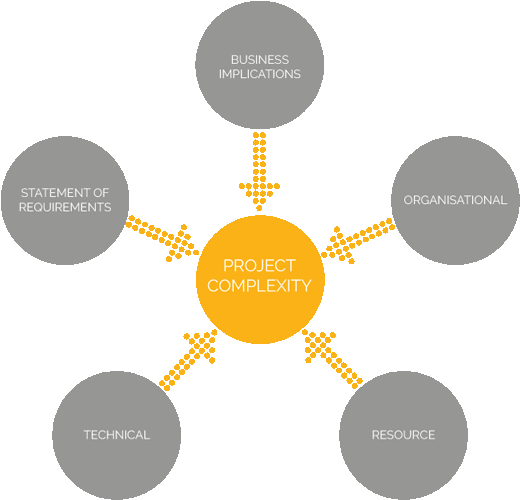MATCHING PROJECT MANAGER CAPABILITY TO PROJECT COMPLEXITY
-
 MATCHING CAPABILITY
MATCHING CAPABILITY
TO COMPLEXITY
With the promise of more predictable project performance, benefits achievement and enhanced value from your strategic portfolio, having the right people in the right place, managing the right projects, is key to enhanced success.
With this in mind, the value of understanding the capabilities of your project and programme managers is undoubtedly attractive.
However, it is only half the story – without understanding more about the type and complexity of the project you are dealing with you could still be setting up your projects and project managers to fail.
To avoid this risk it is essential that you understand both when matching project manager capability to project complexity so that the right project manager is assigned.
MATCHING PROJECT MANAGER CAPABILITY TO PROJECT COMPLEXITY
CITI first researched the importance of the link between matching project manager capability to project complexity in 2000. Since then we have re-tested and re-validated our findings.
The five sources of complexity that we believe are critical when assessing the complexity of a project are:

By understanding each one of the above and the contribution it makes to the complexity of a project the overall project complexity can be established. Over the years CITI has developed a simple, yet effective, tool (PCAT™) to support the assessment which can be readily tailored to an organisation’s business rules and requirements.
This, combined with use of our capability assessments, permits a safe matching process to be employed. However, to understand the whole picture it is also important to assess the capability of the project manager and then ‘match’ the two.
BUSINESS IMPLICATIONS
Whether the project is mission critical or not, its overall profile and the extent of the impact of the project on the organisation and the organisation’s ability to meet its commitments. It also explores the extent of the changes needed within the organisation.
ORGANISATIONAL
The numbers and spread of stakeholders, plus consistency of view of project success.
RESOURCES
The number of areas from which resources are drawn, their experience and track record of working together; whether external suppliers are involved or if, for example, there is a prime contractor in place.
TECHNICAL
How many work packages constitute the project; the number of areas which need to be involved in planning and interdependencies with other projects/programmes; type of technology used, implementation method and product lifecycles used.
STATEMENT OF REQUIREMENTS
Source, stability and consistency of requirements; numbers of components to be integrated and how they need to integrate; change control method.
MATCHING PROJECT MANAGERS TO COMPLEX PROJECTS
In considering the matching process, it is often true that the degree of difficulty and number of projects to be managed exceeds the overall capacity and capability of the project management community.
As capability should increase with experience, it makes sense to avoid assigning projects that don’t stretch the project manager (unless of course it is a business critical project!). It also makes sense (from both a personnel and business viewpoint) to avoid assigning a project manager to a project that will stretch them beyond recovery.
It is rarely the case that there is a neat and tidy one-to-one match between project managers and projects. However, by introducing a
matching process you will know, for example, the level of risk exposure for the business both across the portfolio and at an individual project level. This allows for sound decision making and, where appropriate, timely risk management actions to be taken. For example these may include, but not exhaustively:
- agreeing a number of development and support mechanisms
- re-allocating projects managers within the portfolio
- recruiting a more experienced project manager
all of which would be designed to maximise project throughput while managing risk.
BENEFITS TO THE ORGANISATION
The benefits of understanding both complexity and capability are manifold, including:
Ensuring safer and more predictable performance of initiatives
Matching both an individual’s and the whole community’s capability to organisational needs in resource and developmental terms to meet current and future demand
Supporting decision making and strategic planning for future resource and capacity planning
Identifying capability needs for successful delivery of their enterprise portfolio
Identifying and mapping the organisation’s strengths and weaknesses in, particularly, core delivery capabilities.


